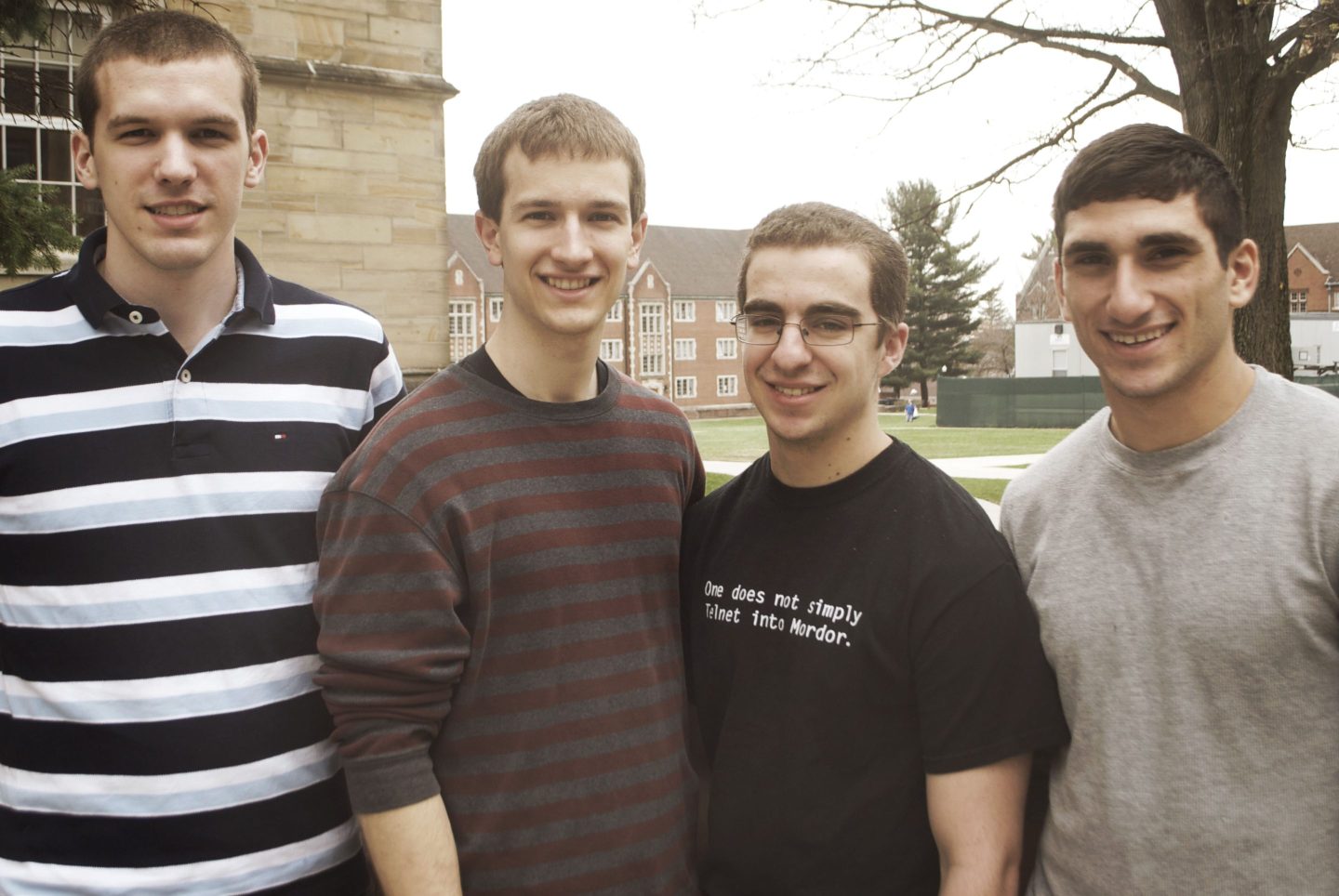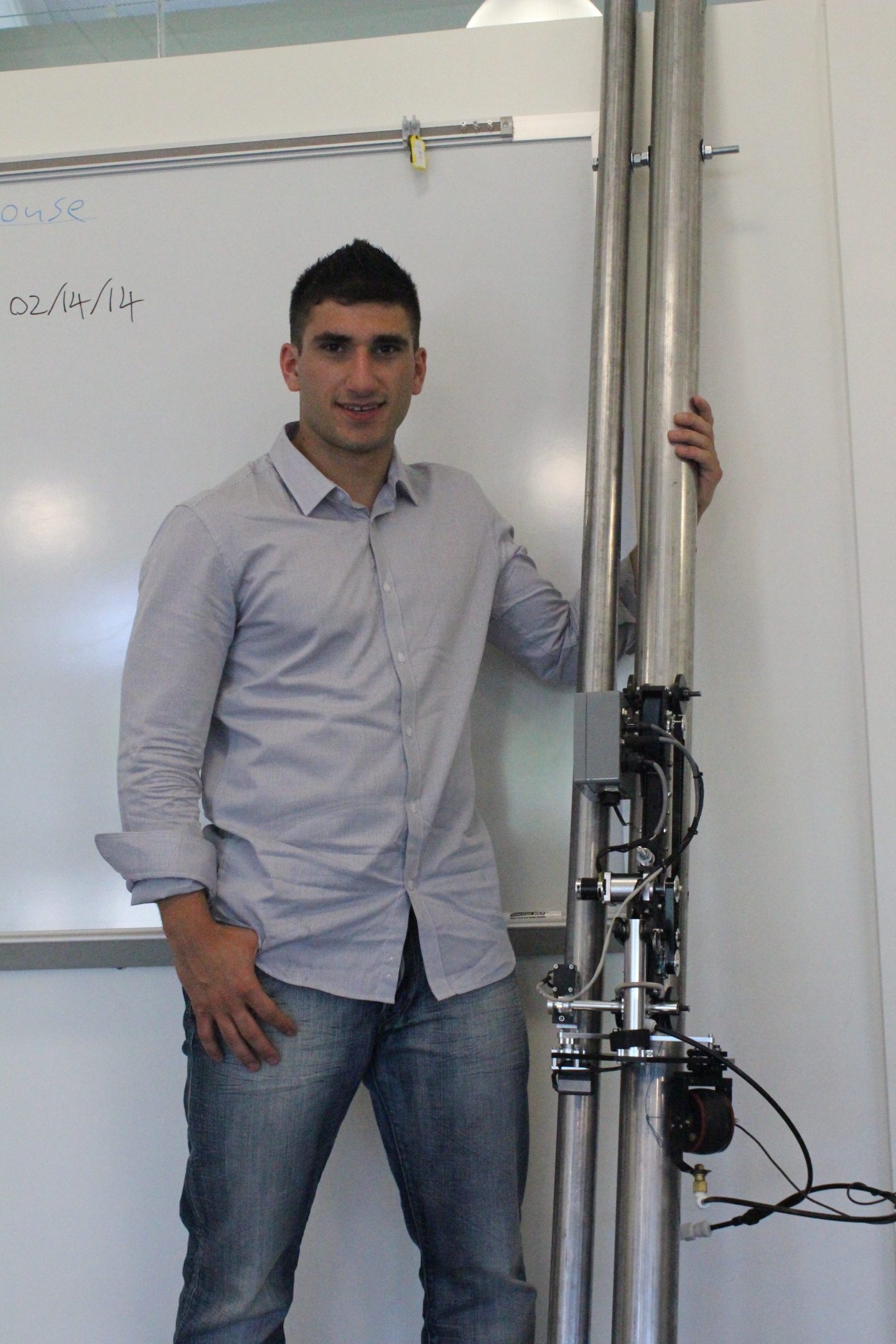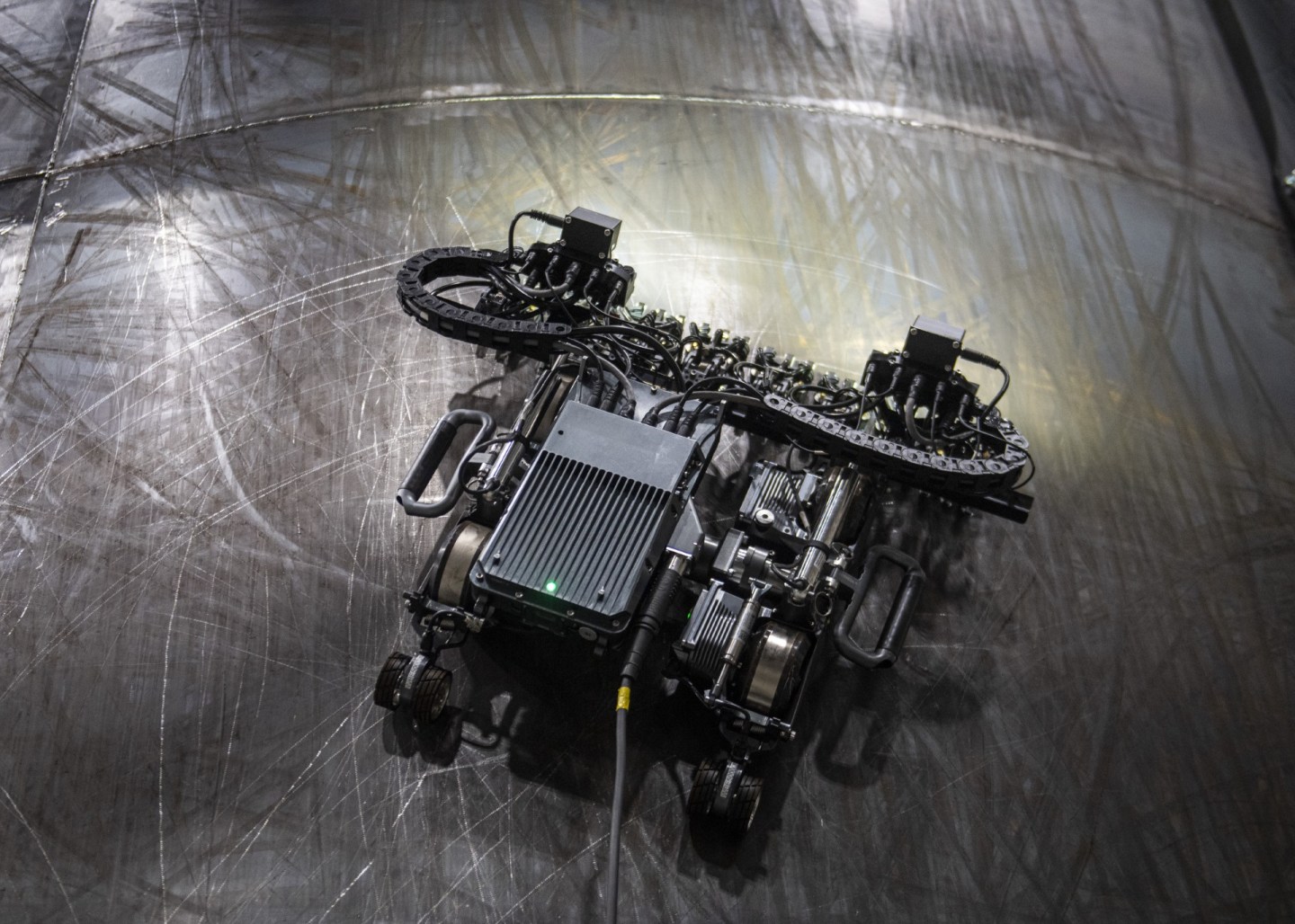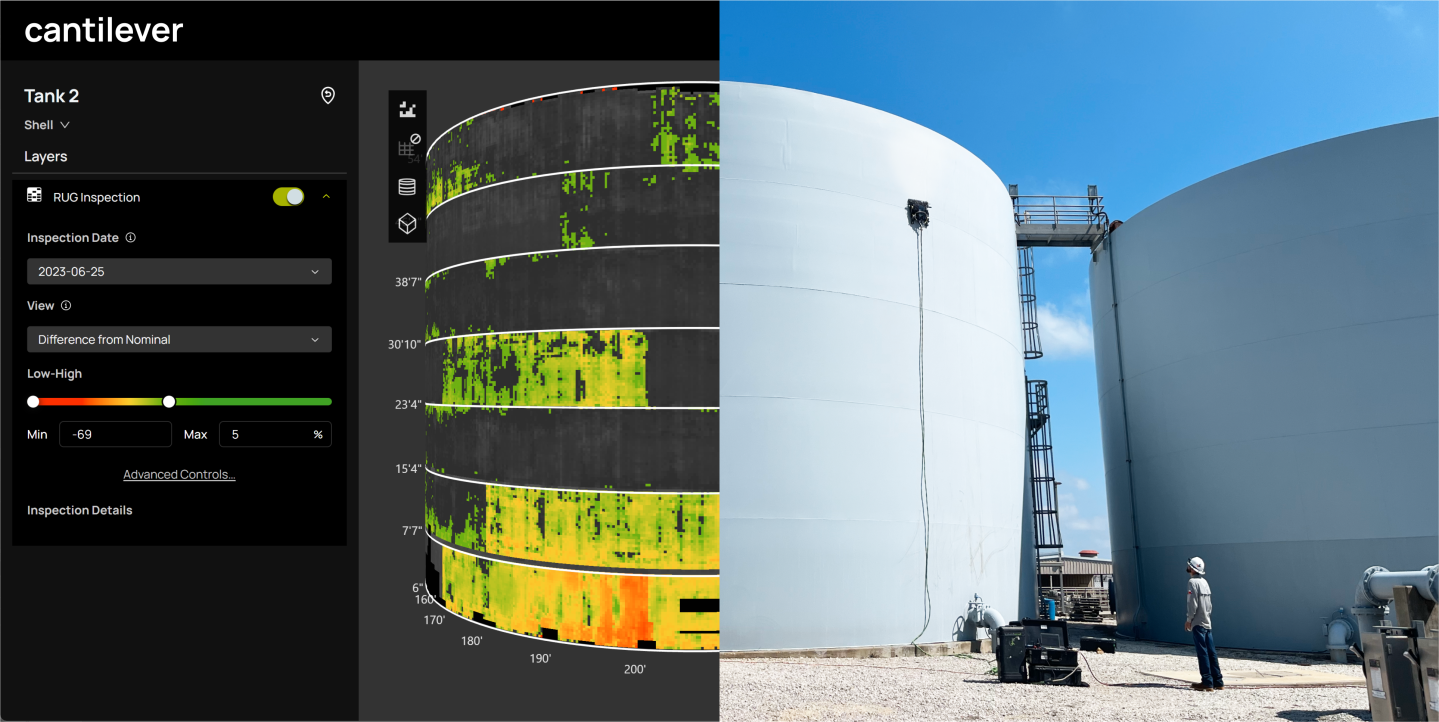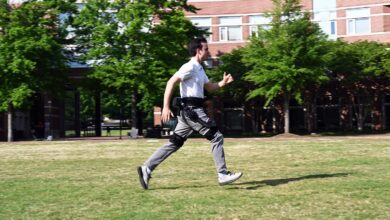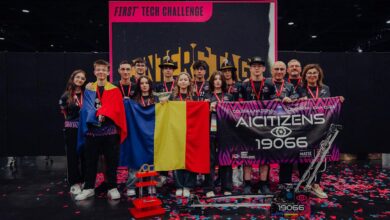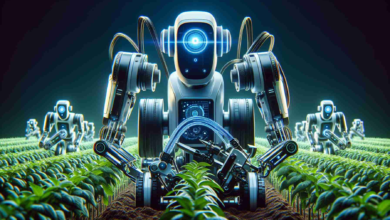Gecko’s founder built a $600 million robot company from a college project

As an electrical engineering student at Pennsylvania’s Grove City College in 2013, Jake Loosararian traveled to Costa Rica for vacation. One day, he and a college friend camped in a rain forest on the country’s Pacific coast and drifted to sleep on hammocks they brought from home, to the sounds of shouting monkeys and scurrying lizards.
The next morning, Loosararian walked to a nearby public shower. While rinsing off, he watched a green lizard—a gecko—walk up the shower wall, and thought to himself: That would be a good name for my future company.
Today, Gecko Robotics, worth more than $600 million based on its latest funding round in December, makes wall-climbing robots that inspect infrastructure like dams, power plants, and manufacturing facilities. The robots find rust, corrosion, cracks, and other defects so maintenance crews can fix them before they cause irreparable damage and require entirely new structures to be built, which can be costly and bad for the environment.
Additionally, Gecko recently raised $100 million to expand its defense technology operations, following its work with the U.S. Navy and Air Force to inspect ships and flight decks. The company has more than 250 employees, 20 of whom come from Peter Thiel’s data mining and software company Palantir Technologies.
Loosararian, now CEO, thinks Gecko could help with the inspections of all structures. “There’s things we don’t think about every day, like rust and corrosion, but if someone’s not taking care of that, we all pay the consequence,” he told Fortune.
In 2021, the collapse of an apartment building in Surfside, Fla., killed 98 people, and an infrastructure-focused government agency is investigating the cause, potentially structural degradation from corrosion and water exposure. That same year, an oil spill in Southern California—thought not to be caused by weak infrastructure—sparked fears that the aging oil pipeline system in the U.S. could produce similar leaks. In the last 20 years, pipeline incidents cost the U.S. $11.4 billion and caused 278 deaths, partly due to aging infrastructure, according to the government agency in charge of pipelines.
“When structures fail catastrophically, the impact on our society and environment is huge,” said Cornell University engineering professor Matthew Reiter. This kind of inspection helps in “dealing with the small problems before they become big problems.”
But at many points while building Gecko Robotics, Loosararian said, he was close to giving up. He poured his savings into the startup because he didn’t know how to raise money, he said. He slept in power plants for three years and took his now wife on dates to the lab where he worked on building his robots. He cycled through cofounders and worked without pay for three years, all while chasing the high of building something bigger than himself, he said. Eleven years after he named his company after a reptile he saw while showering, Gecko stands as the half-billion-dollar company that almost never was.
Robot No. 1
Loosararian began working on the robot months before his trip to Costa Rica, during his fall 2012 semester at the small Christian college in western Pennsylvania. In fact, the seeds for Gecko were planted a couple of years earlier.
It started in 2010 at a power plant 22 miles from the college, called Scrubgrass Generating Plant. The facility’s managers needed something to better inspect two boilers, giant chambers where coal heats water into high-pressure steam to generate electricity. The inner walls of boilers undergo extreme pressure and changes in temperature, which can cause corrosion. Hot sand also sits in the boiler pipes and can eat away at the tubes, causing leaks and shutdowns if they aren’t regularly inspected and repaired.
At the time, engineers examined the structures using a handheld ultrasonic sensor, or a device that detects cracks and corrosion using sound waves. The workers either hung from ropes to do this, which can be dangerous, or built scaffolding to climb, which can be expensive.
In a partnership between the power plant and the college, Scrubgrass engineer Jeff Campbell and engineering professor Vernon Ulrich created a series of senior projects around this problem. The assignment: Build a robot that uses magnetic wheels to climb and perform ultrasonic readings inside the boilers, each the size of an 18-wheeler standing on its nose. Over three years beginning in 2010, three groups of students worked on prototypes, with Scrubgrass funding the cost of materials. Loosararian participated in the third group alongside three other electrical engineering students. The school donated the finished robot to the plant, which used it for years after.
Mike Bright, a Grove City professor who advised on the project, called Loosararian the “intellectual powerhouse of the group.” Loosararian had “brilliant insights” that turned the senior project into a company, including the business model of renting out robots and refashioning the prototype to function on different surfaces, Bright told Fortune.
Loosararian redesigned the hardware for the robots that became Gecko, so his robots look entirely different from what the student project produced, said Ulrich, who also advised the seniors.
Courtesy of Yvonne English
Loosararian cofounded Gecko in May 2013, the same month he graduated college. Fellow senior project member Orion Correa was the other cofounder. The other engineers had discussed joining the company but had jobs lined up or didn’t want to work at a startup, said Yvonne English, who advised the students on the business model through the college’s early-stage business lab. English also worked as the executive director of a business incubator called the eCenter@LindenPointe, which Loosararian would become a part of for two years.
Correa stayed on for one year before leaving. “I was broke and overly stressed,” he told Fortune in a statement. “I couldn’t keep doing the startup bootstrap thing and we didn’t have any immediate prospects for revenue.” It was the right decision for him at the time, Correa said. Loosararian bought Correa’s 50% stake for around $1,600, which Loosararian said was a fortune for him to spend at the time.
Loosararian spent the next three years emptying his bank account, more than $30,000, on the company and sleeping between a friend’s apartment floor and the very power plants he was testing the robots on. Spending time with customers (and sleeping on-site) helped him create practical, not theoretical, solutions to problems at the plants, he said, because he was living them.
“Every date I went on was focused on this,” he said. “Every chance I got, I was living in a power plant and talking to some 60-year-old about their facilities.”
At one point around this time, English remembers walking through the offices of the eCenter@LindenPointe, where Loosararian had a suite, and seeing him lay on the concrete floor, staring at the ceiling. The lights, which are motion-activated, were off. Her first thought was: I knew this was coming.
He was questioning his decision to build Gecko, she told Fortune. Now sitting up, Loosararian and English discussed if he still believed in the company, which he said he did.
Courtesy of Yvonne English
Reflecting on the time period, Loosararian said, “It was hard to feel like I was a part of something bigger than me when it was just me. That took me to some really dark places. If I was doing it for any other reason than the mission of the company, man, I would have quit a long time ago.”
Something bigger
Loosararian’s desire to be part of something bigger stems from an experience he had years prior. In the summer of 2012, before he began working on the robots, the student participated in a cross-country bike ride that sparked a feeling he would continue to chase for years.
He and four other Grove City students biked from Seattle to New York to raise money for a need-based scholarship program for minority students at their college. Grove City agreed to permanently endow a scholarship if the group raised $25,000. The team traveled more than 70 miles per day, occasionally hitting more than 100 miles daily, sleeping in the backyards of alumni and garnering the attention of local news outlets across the country.
It was the first time Loosararian felt like he was making a difference, and he called the feeling “intoxicating.” The group raised $50,000, and the scholarship still exists at Grove City today.
The founder, now 33, grew up in the D.C. area. His homeschool education consisted of building robots from kits and playing in the woods. While he didn’t always love home school, it allowed him to focus his learning on what interested him.
By 2016, Loosararian—still interested in robots—brought on two top executives he knew from Grove City, Troy Demmer and Ian Miller. They each held a cofounder title, despite joining three years after Loosararian created Gecko with Correa. The reason for bringing on new cofounders, Loosararian said, was Gecko’s acceptance that same year into Y Combinator, the exclusive Silicon Valley startup accelerator program then run by Sam Altman, now OpenAI’s chief executive. Loosararian spent his honeymoon with his wife on another cross-country road trip—this one taking five days—to Mountain View, Calif., for the program.
For three months during Y Combinator, Loosararian, his wife, and seven engineers lived in a three-bedroom house with a family one of the engineers knew. The garage became the lab, and the team tested the climbing robots on the side of the house.
By the end of the program, Gecko had $1 million in purchase orders from customers, Loosararian said. In 2017, the company became profitable, but it also lost Miller as a cofounder. He had a different vision for the company, said Loosararian, who took the loss hard. Miller had been a close friend in college and had helped build the first robot for Scrubgrass.
“Going through the motions of feeling—What if I quit? What if I hand this over?—those moments are helpful because it could have produced a different outcome, but in this case, it produced a fierce focus on what we need to do,” Loosararian said.
Miller didn’t respond to requests for comment. The two are still friends, Loosararian said.
An army of robots
Loosararian spent the next few years growing Gecko’s workforce from just a dozen employees to more than 200 today after admitting to initially hiring too slowly.
If there was a job to do, Loosararian preferred that he or Demmer, the other cofounder who is still with Gecko, try to take it on before hiring anyone. The company’s slow headcount growth also came from a high talent bar for applicants and new hires set by Loosararian.
“It’s so painful if you hire people that are not the absolute best for the position,” he said. “There’s only a few people in the world that can actually solve these problems. I honestly just don’t want to work with people who aren’t literally the best.”
Courtesy of Gecko Robotics
Gecko now has 150 robots that its employees operate at customer sites. The machines, about the size of a rolling suitcase, still use magnetic wheels to climb steel, and for nonmagnetic structures like concrete, robots climb using vacuum adhesion.
After scanning a surface, Gecko builds a digital model of the structure so customers can see virtually exactly where the damage is. The company’s software products use artificial intelligence to help clients analyze the damage, including determining the corrosion rate and the estimated remaining life expectancy. Its AI then advises customers on necessary repairs and predictive maintenance, which works to reduce the risk of catastrophic failures like explosions, leaks, or collapses. Customers pay for the data and repair plans, though Gecko wouldn’t disclose how much the service costs. It also declined to comment on revenue and profit figures.
Courtesy of Gecko Robotics
Gecko faces competition from other robot makers focused on inspecting infrastructure. Latvian startup Aerones suspends robots from ropes to inspect and maintain wind turbines, which includes cleaning and coating the blades with a solution that prevents ice buildup. ANYbotics, in Zurich, has four-legged robots performing inspections across power, mining, and railway industries. Meanwhile, companies like Switzerland’s Flyability and California’s Skydio make drones that inspect assets for customers.
Overall, the robotics industry has hit some turbulence. Last year, Google parent Alphabet shut down its Everyday Robots division, which built robots to help with office work, as part of a larger 12,000-person workforce reduction. Robotic vacuum company Neato Robotics closed last year after an 18-year run, because it couldn’t meet financial goals, according to its parent company. Once valued at $2.25 billion, pizza-making robot company Zume also shuttered last summer.
Loosararian attributes Gecko’s growth during this time to the industry’s demand for data and the company’s foundation. “We didn’t sit on the toilet and think, I bet a robot could clean dishes and scrub bathrooms,” he said. “We went into the heart of the industrial economy to learn how things were made in the real world and built robots to exist within it.”
Robots, especially robot crawlers, are the future for inspecting infrastructure, said Reiter, the Cornell engineering professor. And inspection is more important than ever as buildings continue to age and new construction presents new problems.
“The challenge is that structures are becoming more complex,” Reiter told Fortune. Historically, “one person would know everything from concept to completion, but now the buildings are so complex and there’s so many trades, specialty contractors, engineers, and architects involved that not one person can understand all of it.”
As a result, it’s difficult for engineers to prioritize quality control from the beginning of construction, he said. “Things aren’t performing or lasting as long as they could.”
Correction, April 17, 2024: A previous version of this article misstated the business incubator Loosararian participated in. It was the eCenter@LindenPointe.
